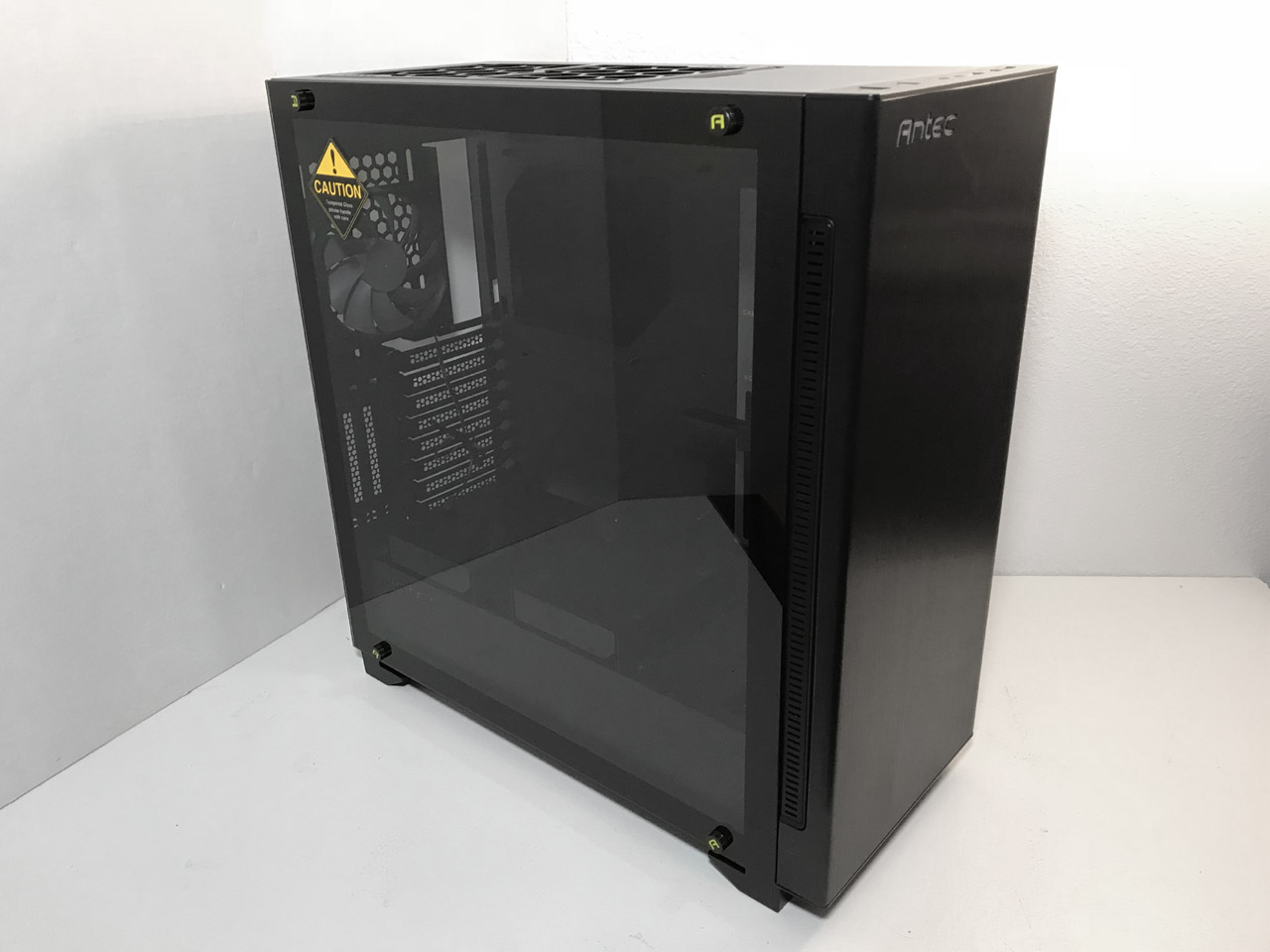Early Verdict
The Antec P110 Luce is a great looking chassis with compelling features but needs further refinement before it can earn a recommendation. Thermal performance issues can be resolved by the addition of a second intake fan, but that would no doubt result in higher noise output, a higher price tag, or both. This chassis would be a much better value in the $90 - $100 range.
Pros
- +
Tempered-glass side panel
- +
Filtration system
- +
Low noise
Cons
- -
Price
- -
Only two 120mm fans
- -
Mediocre thermal performance
Why you can trust Tom's Hardware
Features & Specifications
On the test bench today we have the Antec P110 Luce, a full-featured, mid-tower chassis with a tempered-glass side panel. This chassis is constructed of steel, aluminum, and plastic and is painted black inside and out. The case measures 230 x 489 x 518mm (W x D x H) and weighs just under 26lbs.
Specifications
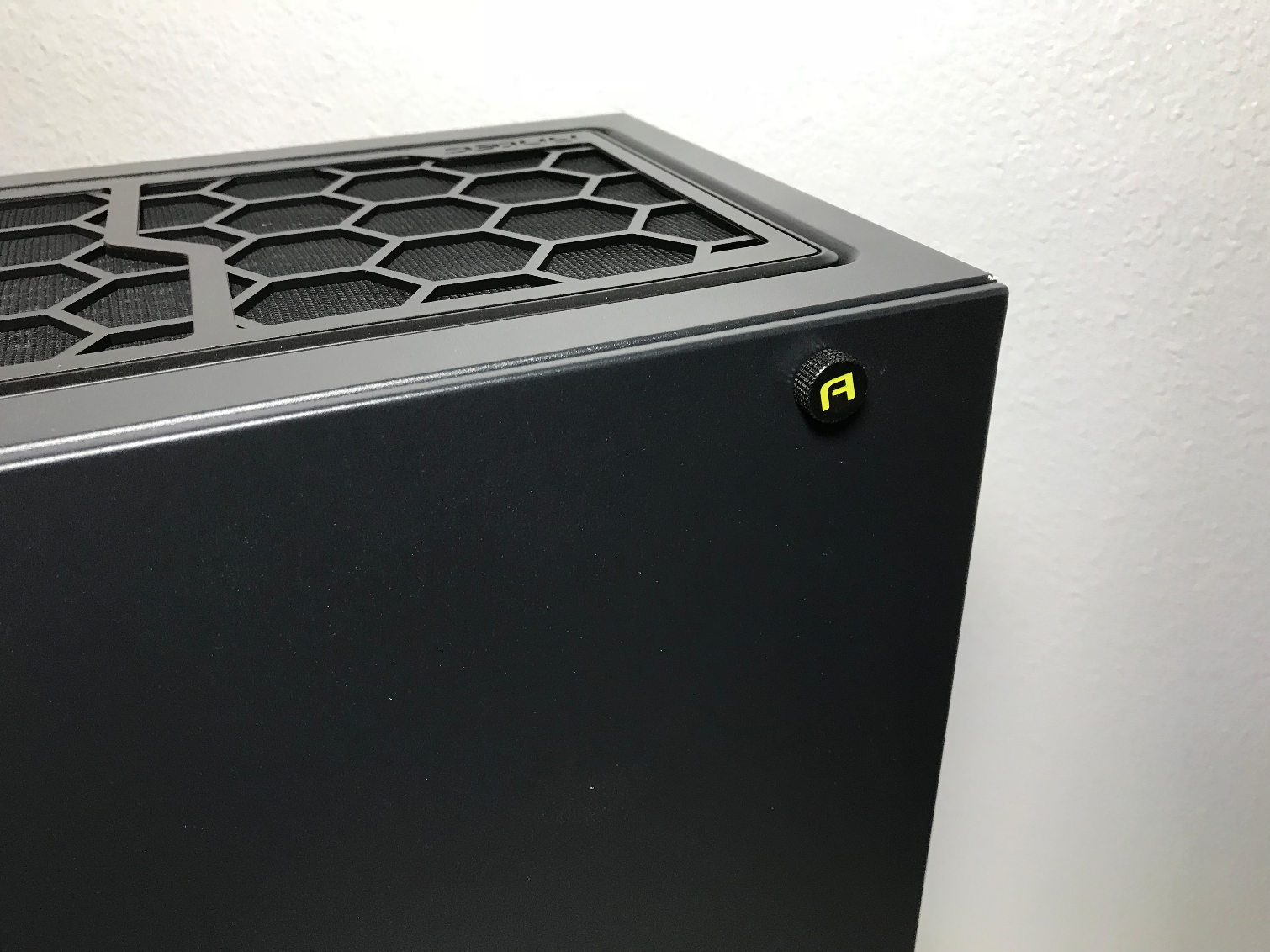
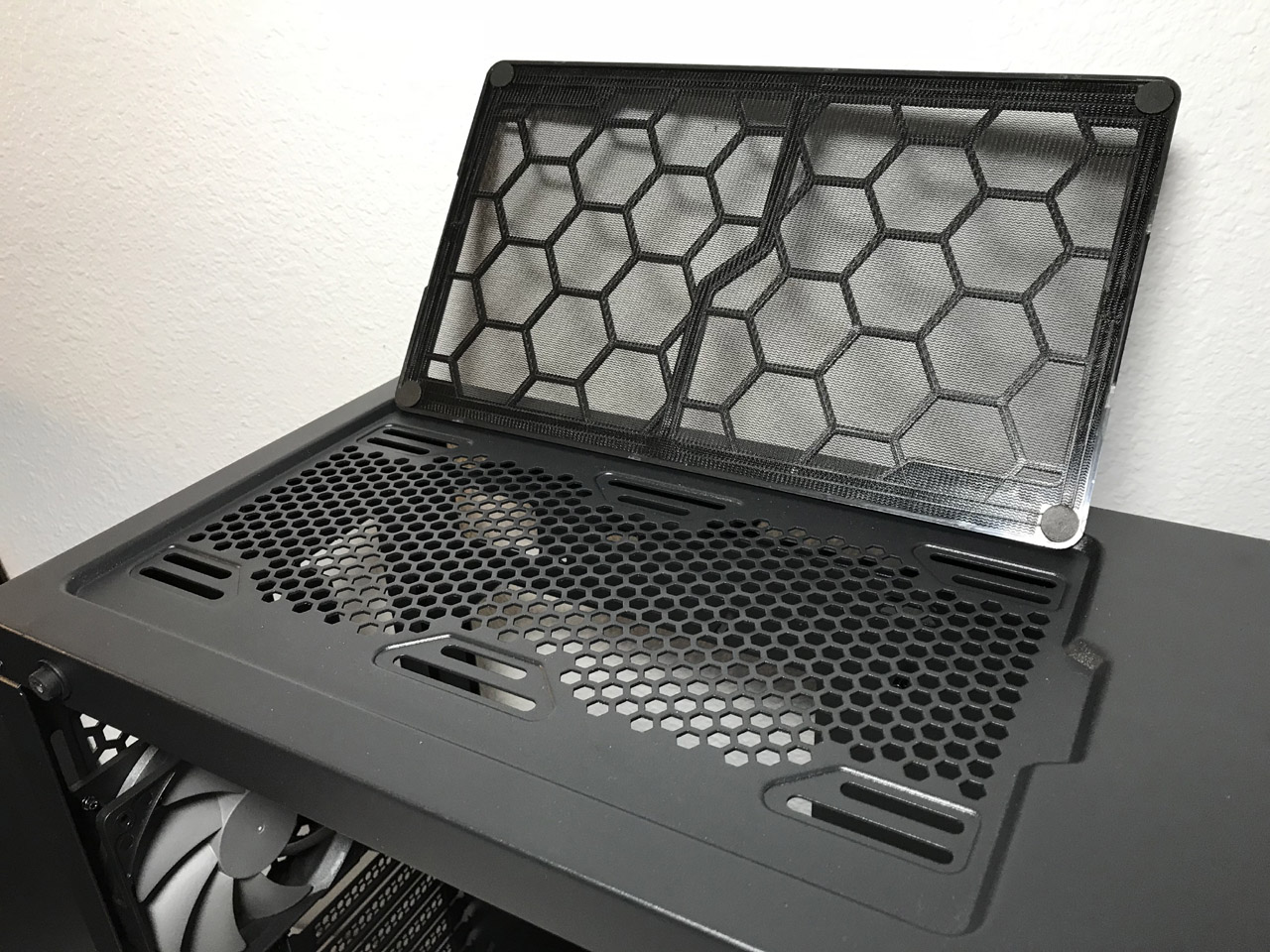
The rear portion of the top of the case is covered by a plastic mesh filter with magnets embedded in each corner. Directly under the filter is a mesh area that has mounting locations for two 120mm/140mm fans.
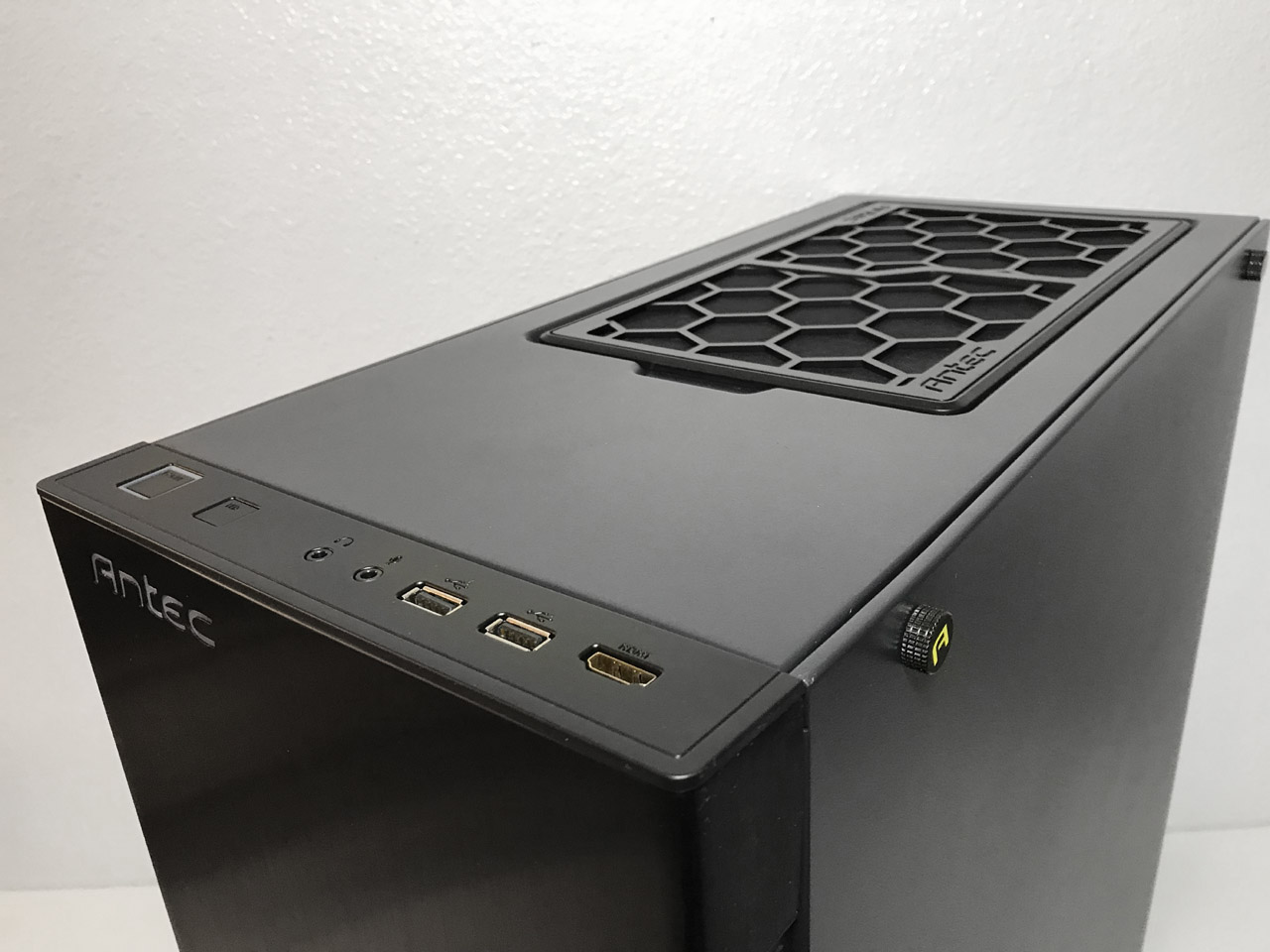

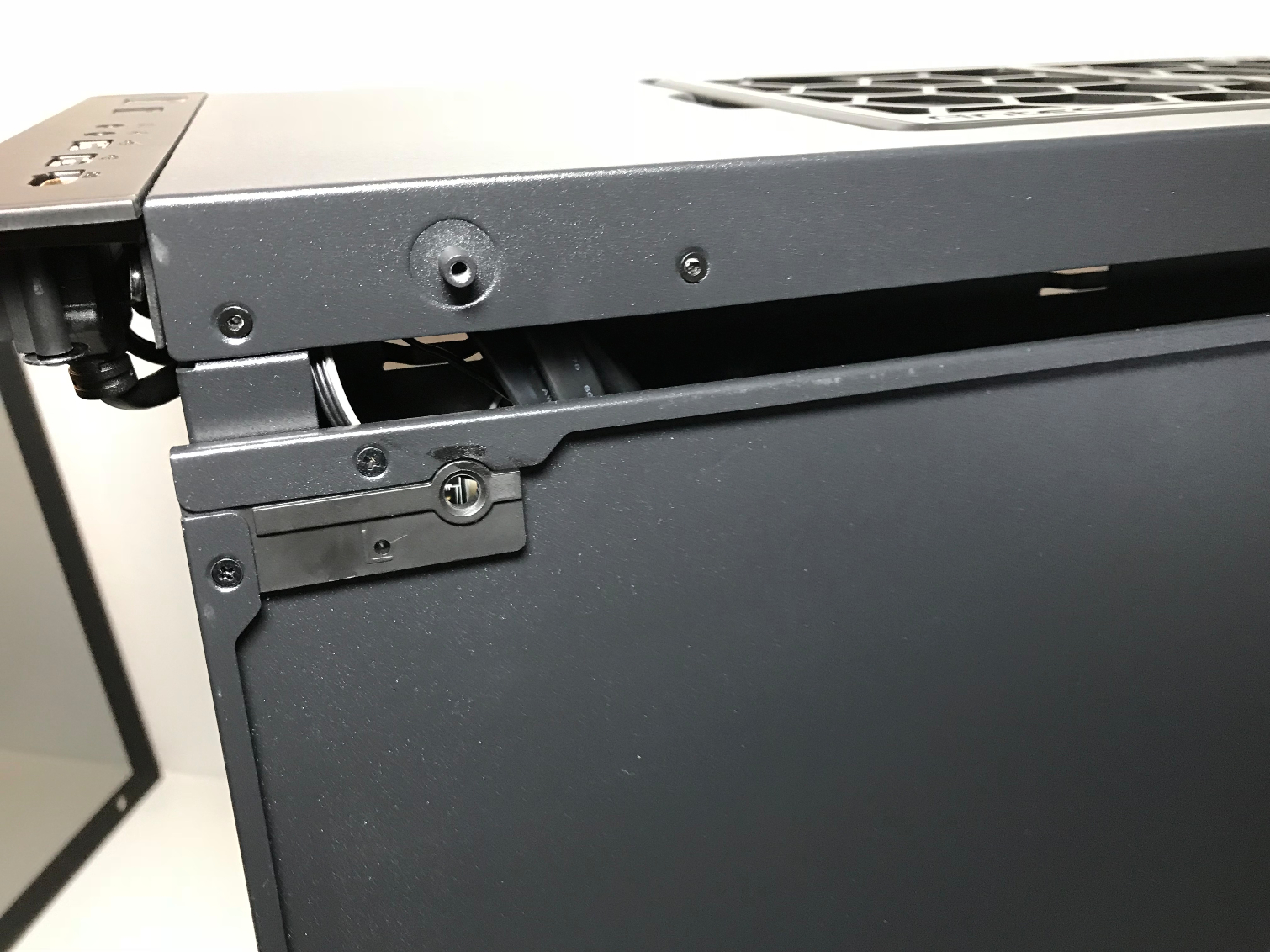
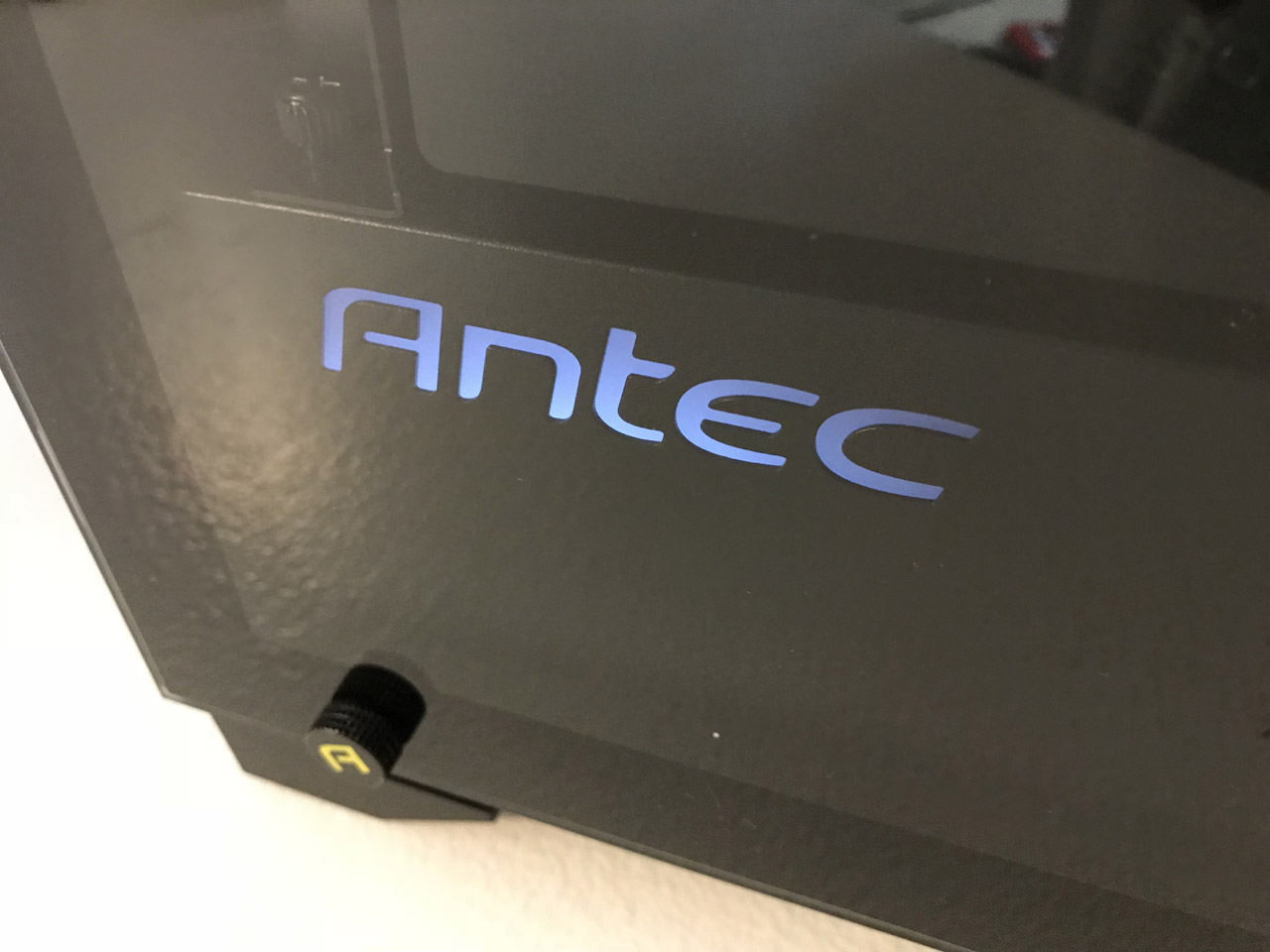
The front of the chassis consists of a large plastic panel with a .8mm brushed-aluminum cover. There are vertical air intake vents on either side of the front fascia. Aside from the lighted Antec logo in the upper left hand corner, the front panel is featureless and lacks any 5.25" drive bay openings. The front panel is tool-less and is attached to the chassis via metal push pins. Removing the panel for maintenance or component installation is a simple matter of pulling the lower edge out and away from the chassis. The front panel requires very little effort to remove. Care must be taken when lifting or moving your system to prevent the panel from popping off.
The tempered-glass side panel, held in place by rubber-coated locating pins and thumbscrews, measures 451 x 489mm and covers the entire side of the case. Oddly enough, the metal panel on the opposite side of the chassis also features locating pins and thumbscrews, almost as if this chassis could be fitted with a tempered-glass side panel on this side as well.
The bottom of the case has a large filtered hole for power supply ventilation and four large plastic feet. The rear of the chassis is home to ten expansion card slots (8 horizontal, two vertical), motherboard I/O area, and an opening for a bottom-mounted PSU.
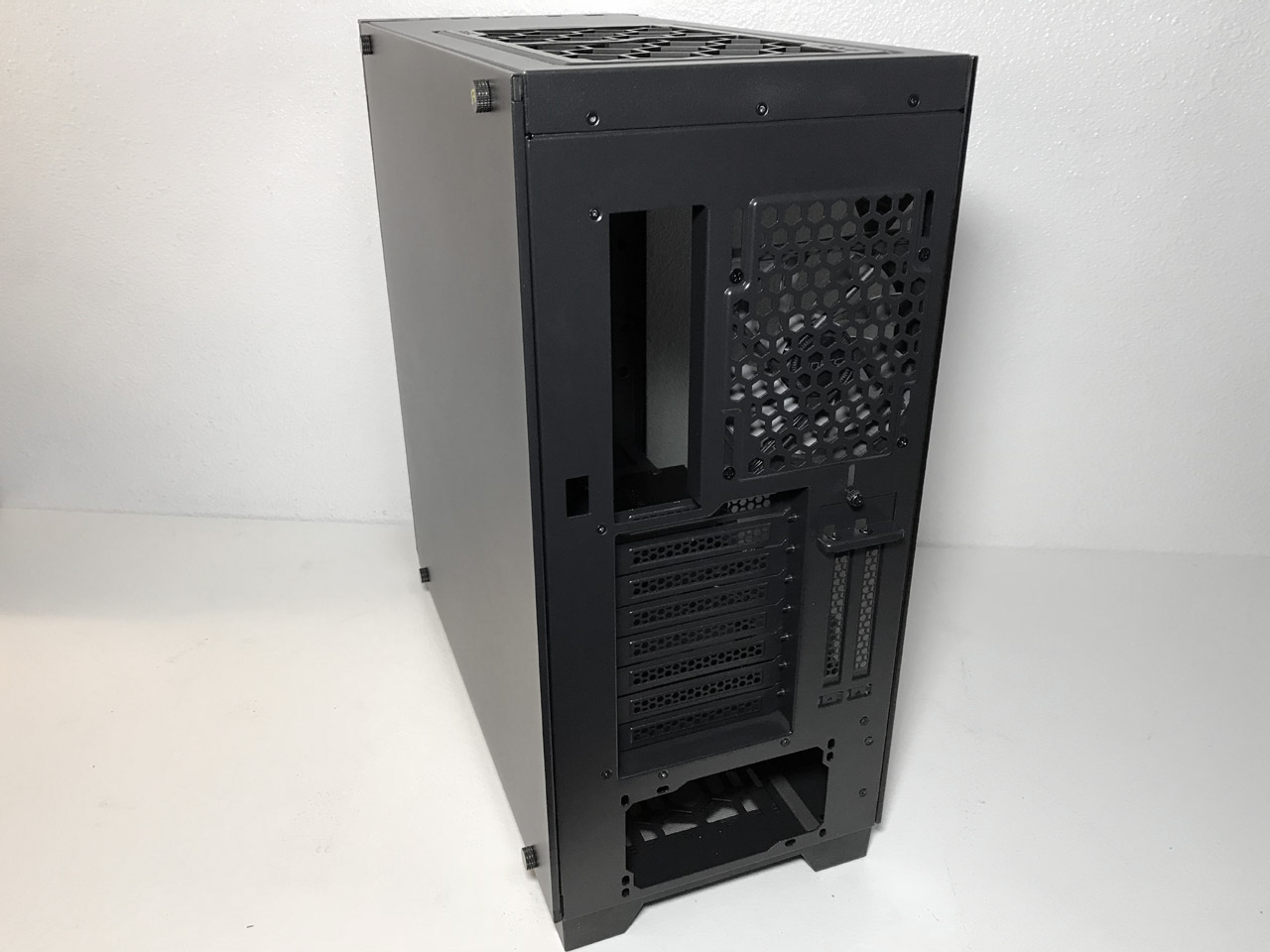


The screw holes for the rear-mounted 120mm exhaust fan are slotted, allowing you to slide the fan up or down. This is especially useful when making room for other components or for fine tuning the airflow in your system.
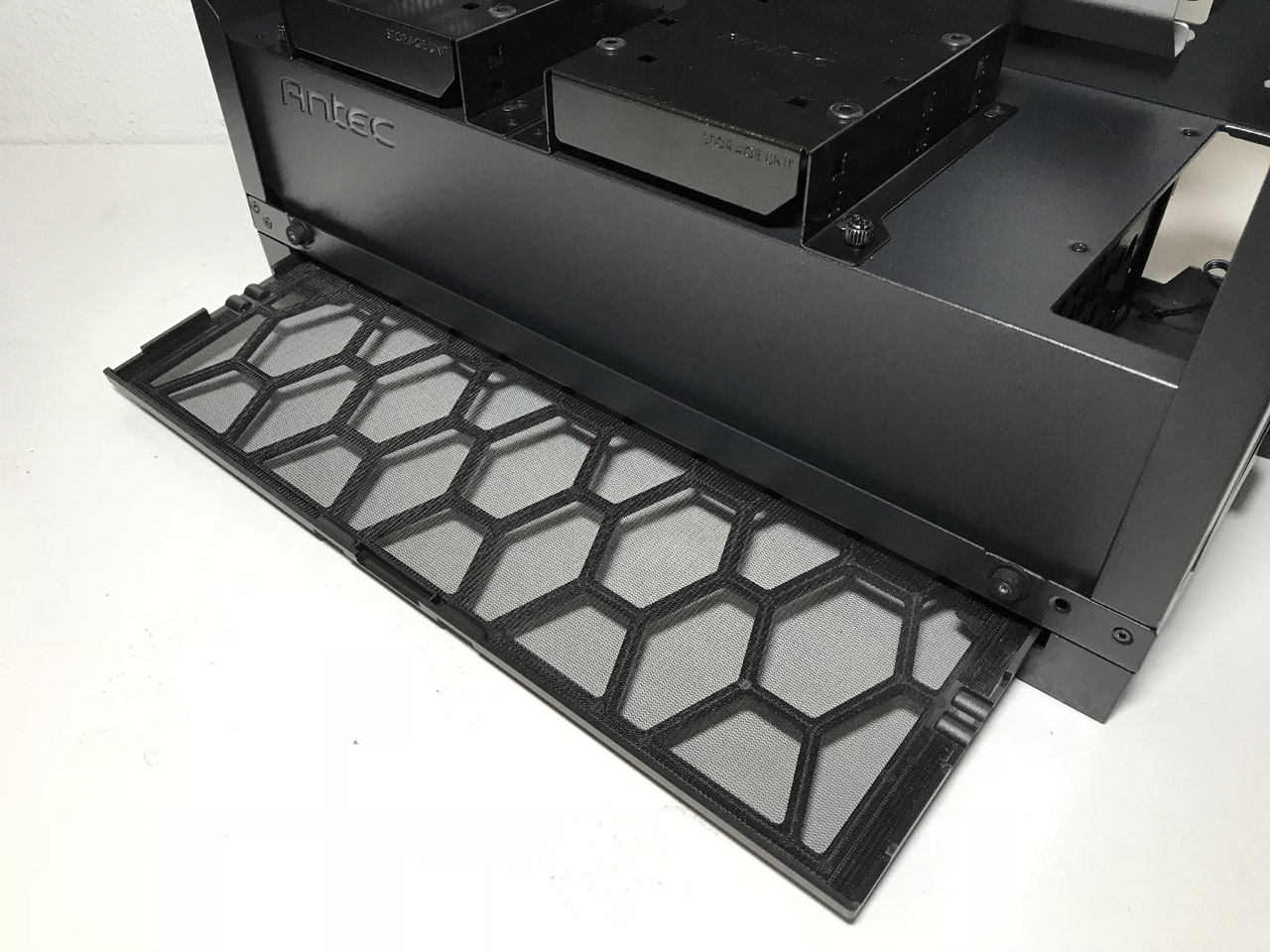
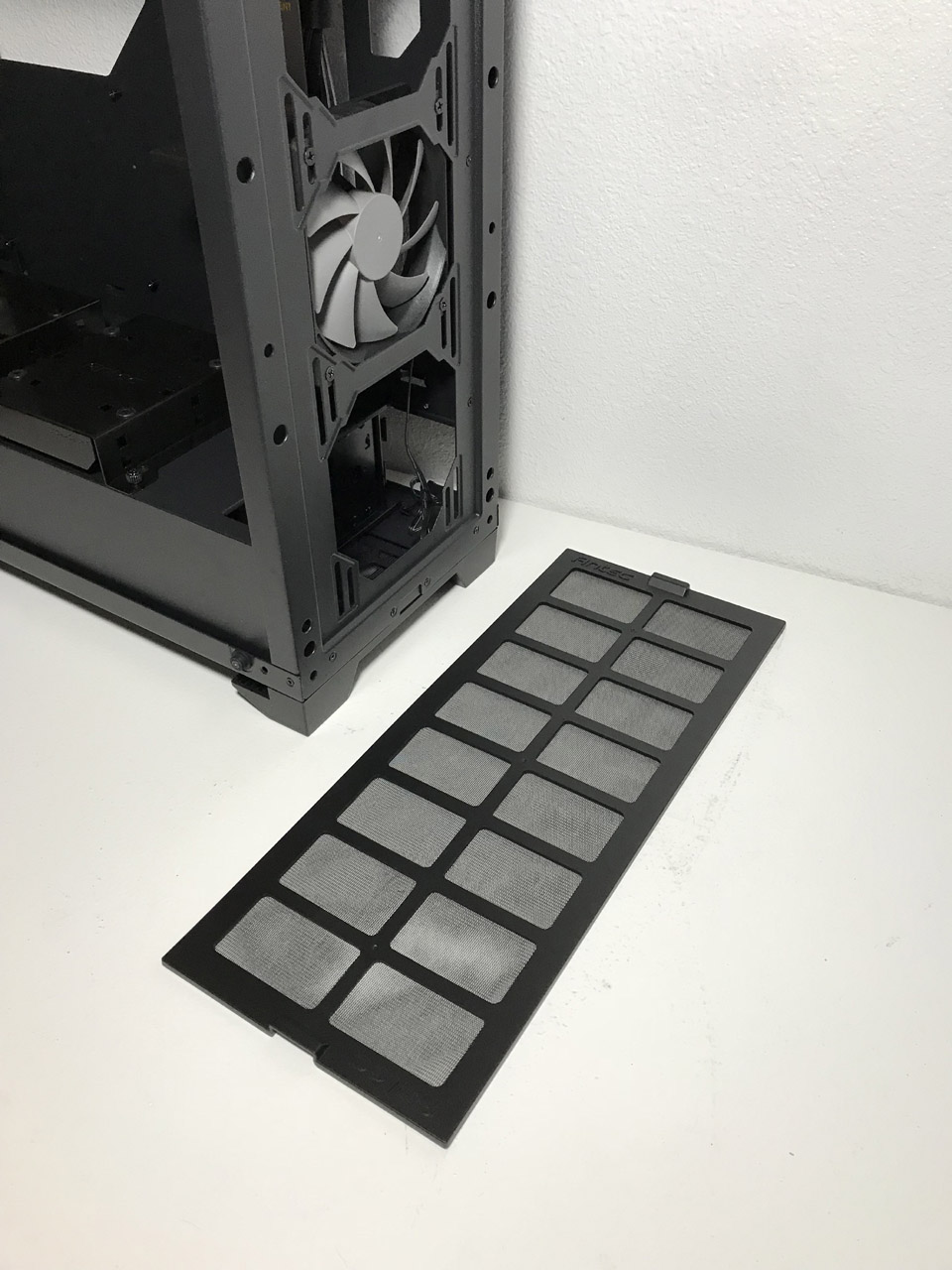
The Antec P110 Luce features a robust filtration system that is easy to use and maintain. Every intake fan mounting location is equipped with a removable nylon fan filter. The filter on the top and front attach to the chassis via built-in magnets. The large filter on the bottom of the chassis slides in and out on rails. Kudos to Antec for making the bottom filter removable from the side of the chassis so maintenance doesn't require you to move your entire system to gain access to the filter.
Get Tom's Hardware's best news and in-depth reviews, straight to your inbox.
Inside one of the empty 3.5" drive bays you will find a small white box containing various screws, Velcro cable straps, and an installation guide.
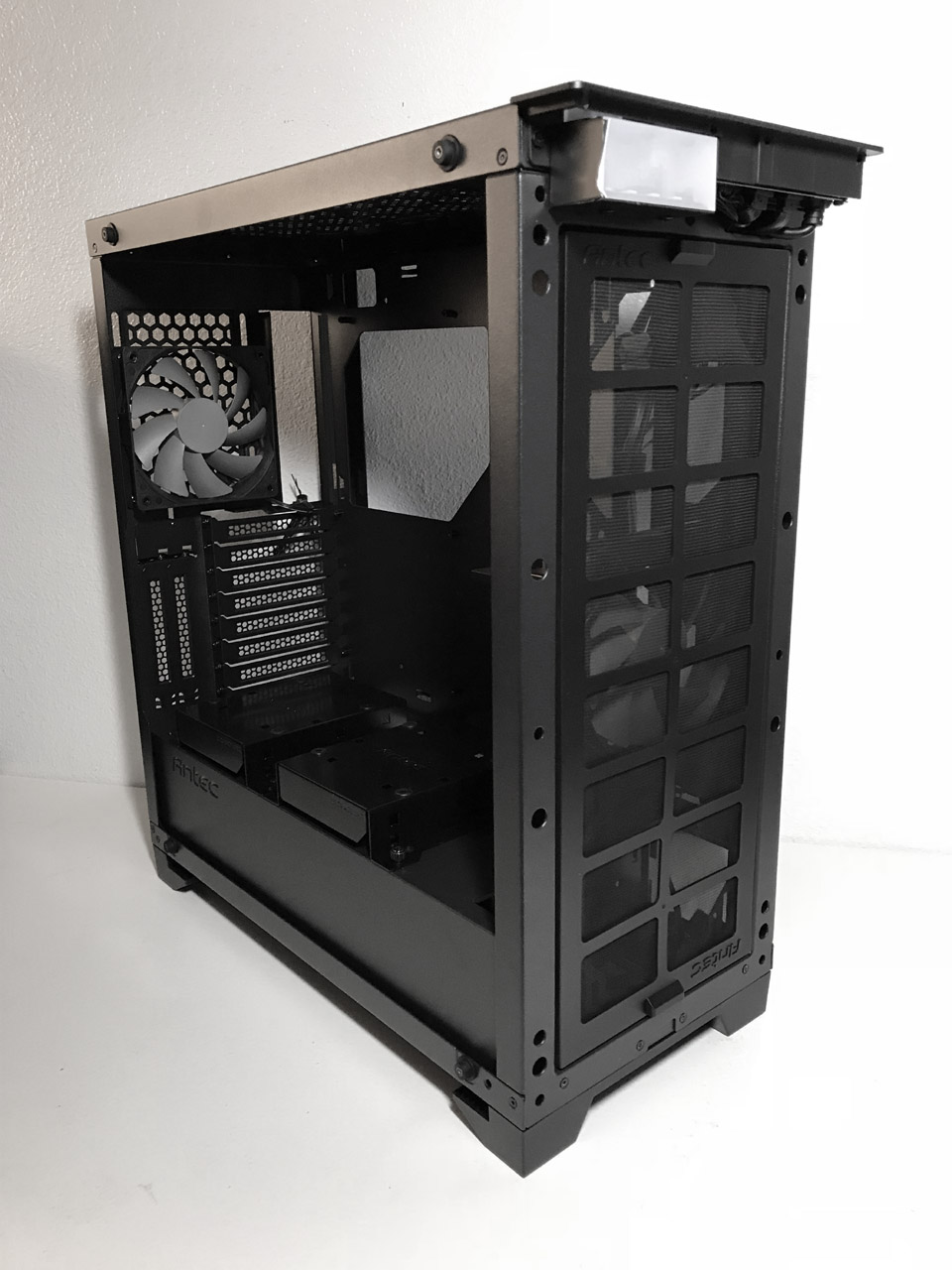
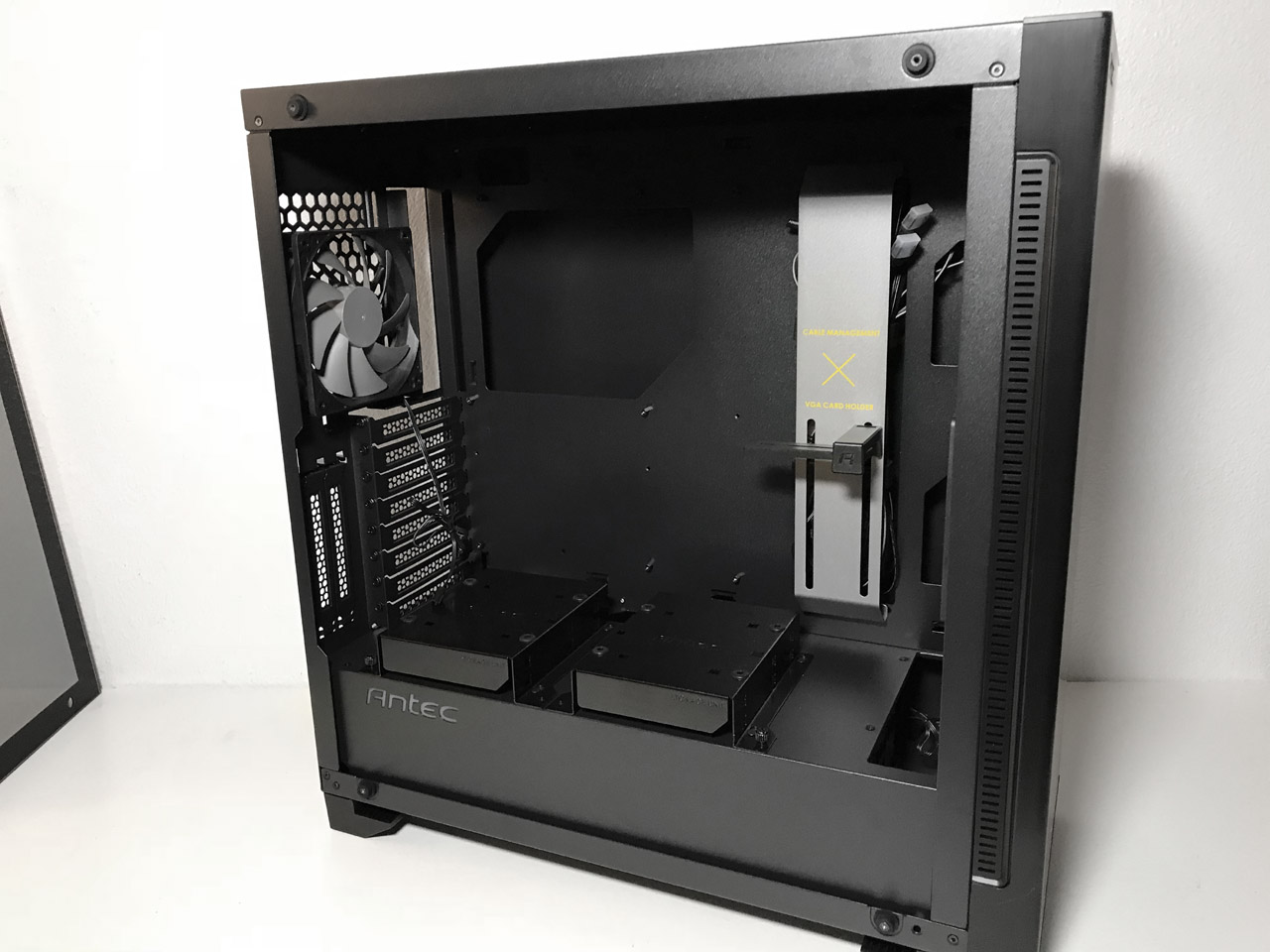
The interior of the P110 Luce is roomy for a mid-tower ATX chassis. This can be attributed in large part to the lack internal drive bay racks in the main component compartment. This chassis can accommodate up to ATX motherboards. The eight expansion slots make it possible to install up to three graphics cards in SLI and/or CrossFire (even on motherboards that require the third card be placed into the bottom slot -ed).
The chassis also features two expansion slots for vertically mounting a dual-slot GPU, though no PCI-e riser cable is included. Although this case supports graphics cards up to 390mm, cards of this length can prevent the installation of all-in-one coolers and fans in the front of the chassis.
MORE: Best Cases
MORE: All Case Content
Steven Lynch is a contributor for Tom’s Hardware, primarily covering case reviews and news.
-
gosubuilder http://www.tomshardware.com/reviews/nzxt-s340-elite-case,4855.htmlReply
The NZXT 340 elite is cheaper, and better looking, better build quality.
Only thing this case does better is the top filter, which nzxt 340 elite does not provide for some dumb reason (you have to purchase from 3rd party supplier separately) -
JoeMomma For some reason the photos are broken for me in Firefox Quantum.Reply
I see a number where the photo should be and arrows on the left and right.
The charts display correctly. -
Lutfij G,Reply
Antec had the P8 but that also suffered from a higher price tag after a couple of reviewers's reviews went live. You've gotta give them props for coming out with a chassis that has it's branding illuminated on the PSU shroud and the front fascia. -
g-unit1111 Reply20456230 said:G,
Antec had the P8 but that also suffered from a higher price tag after a couple of reviewers's reviews went live. You've gotta give them props for coming out with a chassis that has it's branding illuminated on the PSU shroud and the front fascia.
Yeah I like that part of the design, it's a very nice touch to it. It will be a good addition of my usual go to cases - the Fractals, NZXTs, and Phanteks that I typically own and recommend. -
jason.rogers05 The German beauty, Raijintek Asterion Classic Plus is a great aluminium case, tampered glass on both sides and ample case filteration, would be interested how that fares in the benchmark test.Reply
